All products featured are independently chosen by us. However, SoundGuys may receive a commission on orders placed through its retail links. See our ethics statement.
Just how bad are dollar store headphones?
June 2, 2021
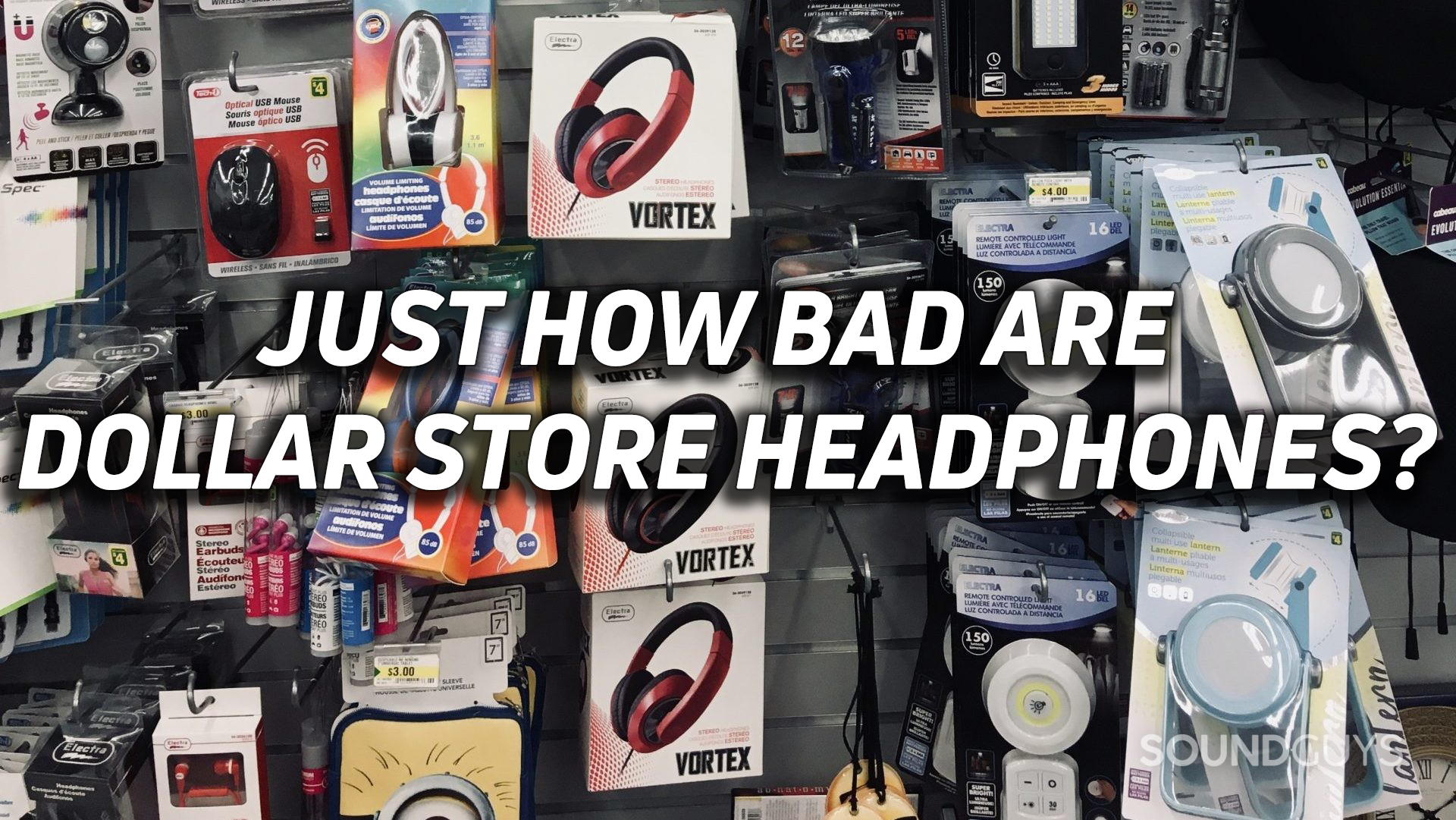
We’ve all seen ridiculously cheap consumer electronics sold at markets, dollar stores, or gas stations and wondered, “how bad could they be?” Maybe you’ve been in a pinch on a trip, having left your headphones at home and been forced to pick up a temporary solution for a few dollars, only to throw them out or give them away later. When something is priced that low it may as well be disposable, after all. The truth is even headphones that retail for hundreds of dollars cost just a few dollars in actual materials, so maybe those cheap dollar store ones are almost as good, or close enough.
In the spirit of investigative tech journalism and hopefully, as an educational piece, let’s examine and measure some really cheap headphones. This will also provide a better feel for how our objective test and measurement system works, and how a product that isn’t (ahem) “expertly tuned” looks, according to our standard review metrics and charts.
The candidates
We picked up a selection of cheap headphones for $4 CAD (approx $3.3USD) each. Three of these are closed-back, on-ear designs that go by the brand name Electra, in Vortex and Extra Bass flavors, as well as a third style which doesn’t seem to have a catchy model name, but is allegedly volume limited to 85dB—an interesting claim, and one that we can easily verify. A fourth product found at the same store is a pair of wired earbuds with a cable-mounted microphone that goes by the moniker “Moodlab Rex.”
Initial impressions

Packaging is rudimentary across the board. No surprises there. The Electra Vortex feels and sounds horrible. It apparently houses 40mm drivers, but feels small and is very lightweight. A hi-fi critic might describe the sound profile as “lo-fi, woolly, cloudy, and almost entirely composed of a dreary, unfocused lower midrange.” In our world, it is both uncomfortable and unpleasant to listen to in all the ways that count.
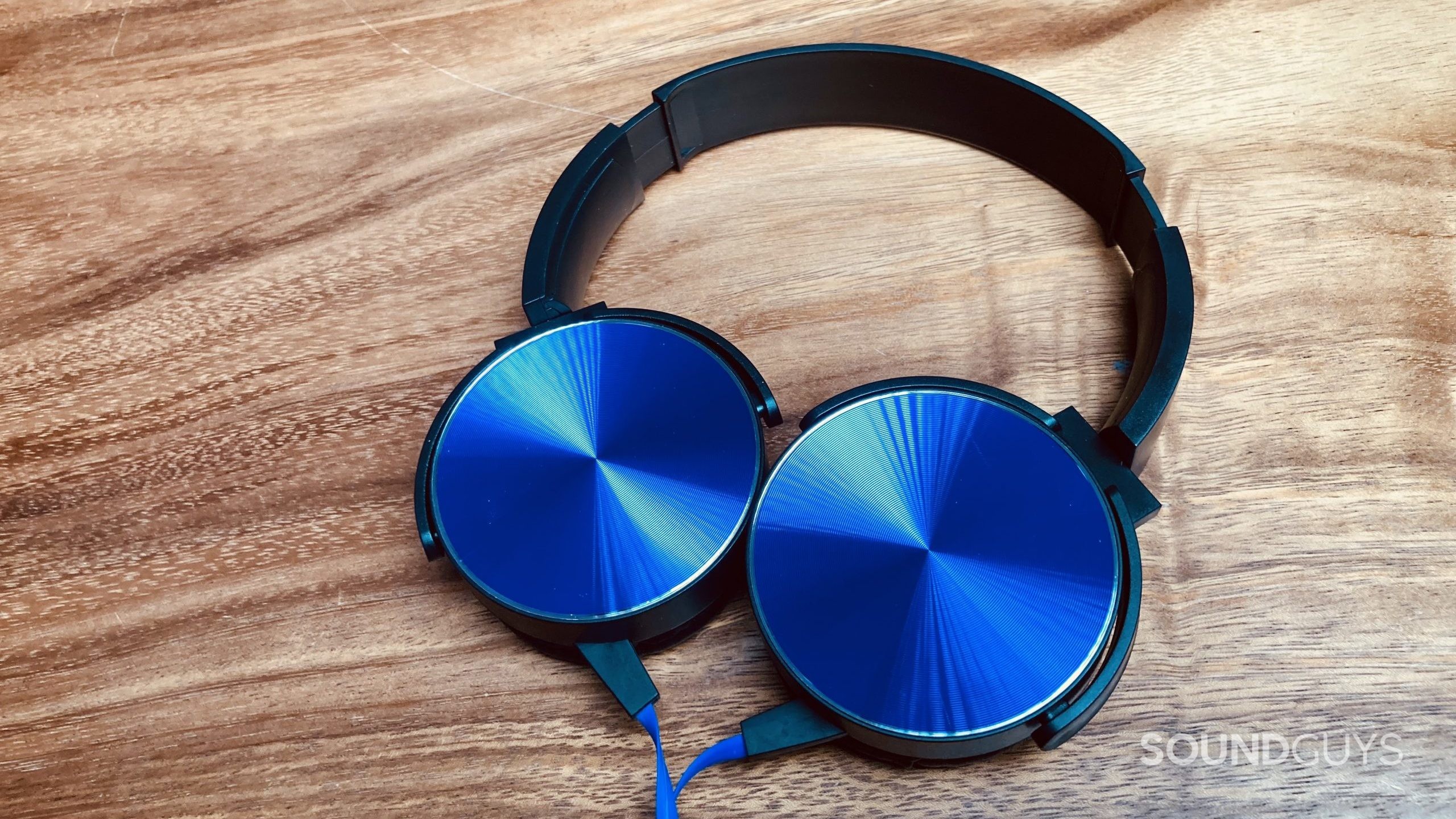
The Electra Extra Bass looks a bit flashier, with a slightly nicer cable, a right-angled 3.5mm jack plug and ear cups that fold flat for storage, but zero padding on the headband. It is wired incorrectly: the left and right labels on the headphones are wrong. It sounds much worse than the Vortex. There is no “extra bass” apparent at all. The sound is unbalanced in more ways than one: there is a severe left-right mismatch: all the bass and some low midrange seem to come exclusively from the left channel (labeled right).
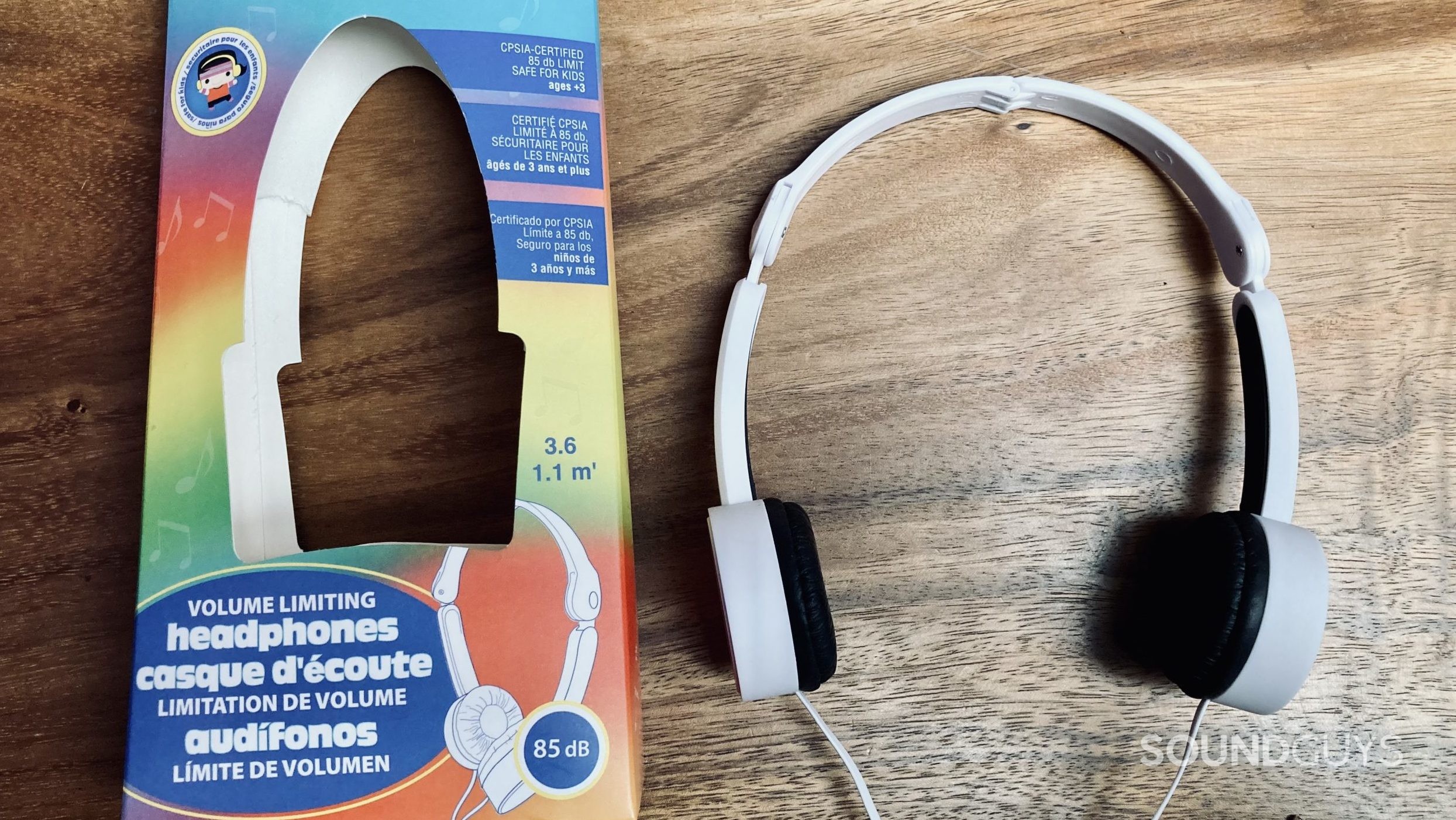
The volume-limiting headphones fold down for compactness, with multiple hinges connecting the different plastic parts, making them even less comfortable than you might imagine. The ear pads sit awkwardly and are brutally uncomfortable. However, the terrible fit ought to work in its favor, as this prevents the ear pads from creating a seal or providing any real bass. High SPLs will be hard to achieve with typical audio content, assisting the volume-limiting promise.
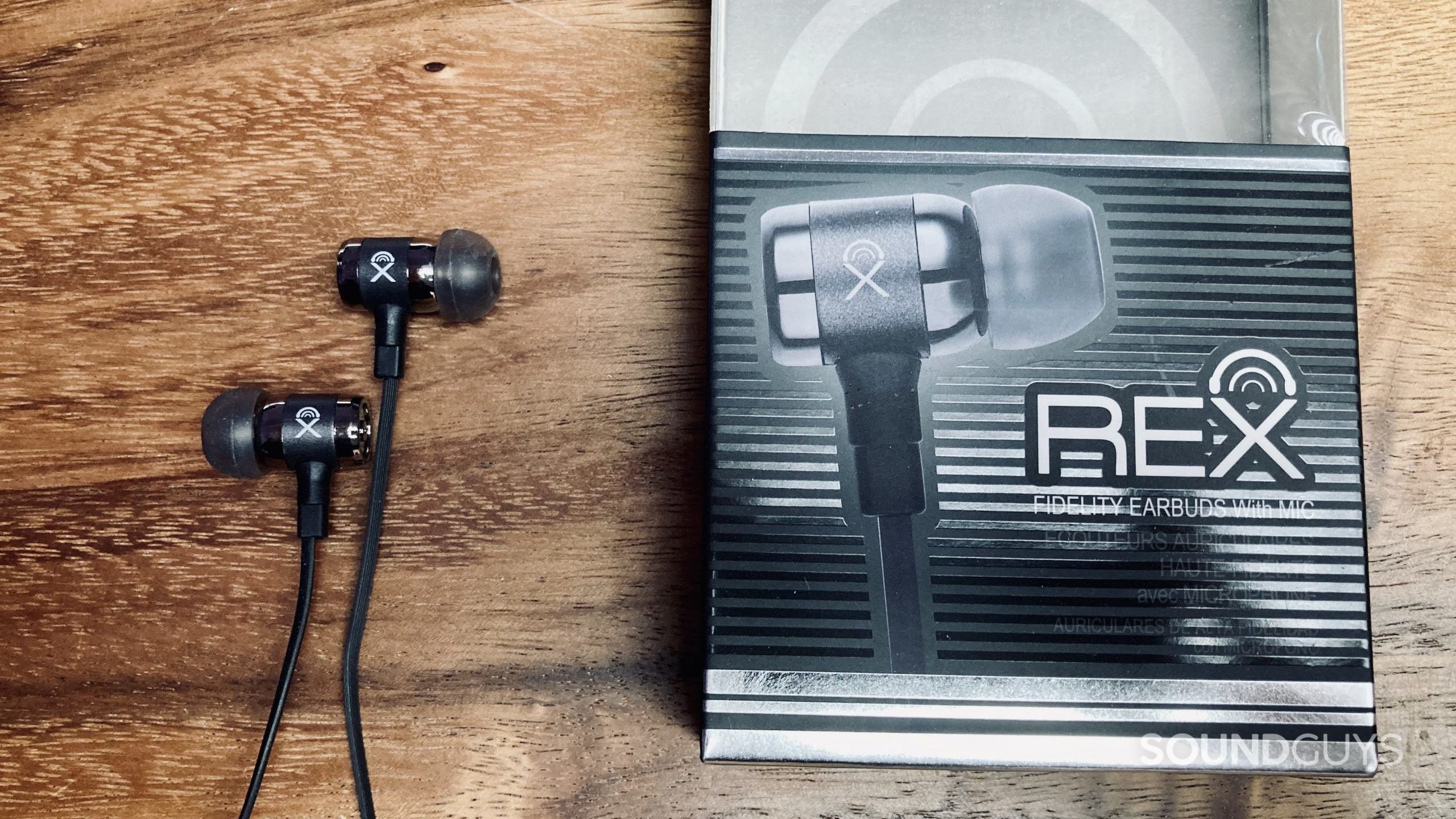
The Moodlab Rex comes closest to resembling an actual finished product, from the packaging to the attempts at making it appear premium with metallic paint over plastic parts. Upon first listen, it’s apparent that the left earbud has a bad connection where the cable connects. It’s intermittent, but in certain positions, the signal can pass. The silicone ear tips are not good: I can’t get a good seal in my ear canals (not unusual for me, unfortunately). But with some pressure I can get them to couple passably enough for a brief, unremarkable listening test—the hi-fi critic might say they “have a nasty, fizzy characteristic”—but they do a better job of representing the audio spectrum than any of the other models. They fit reasonably well in our test head’s ears though, so this should be interesting.
How good, or bad, do dollar store headphones sound?
Each headphone was measured on our industry-standard test head, using our standard product review test procedure, which provides high-resolution data on frequency response, left-right tracking, sensitivity, and several types of distortion. This is what we found:
Electra Vortex
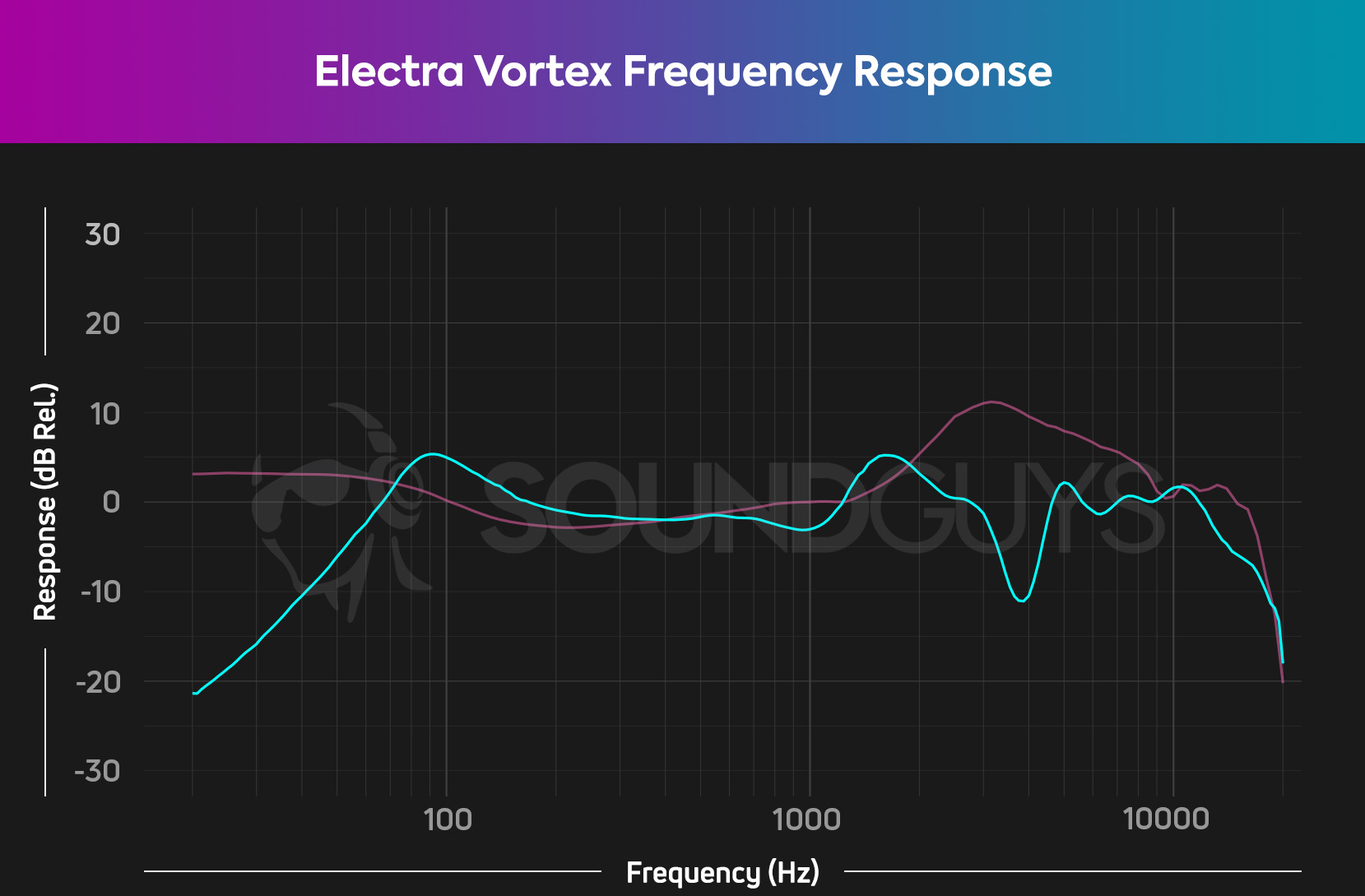
The Electra Vortex frequency response is all over the place, and it’s not pretty. Bass exhibits a resonant peak just under 100Hz then rolls off rapidly on the left-hand side of the chart. Wild swings occur in the critical upper mids between 1kHz and 5KHz, high frequencies drop quickly after 10kHz. That imaginary hi-fi critic may have been on to something..
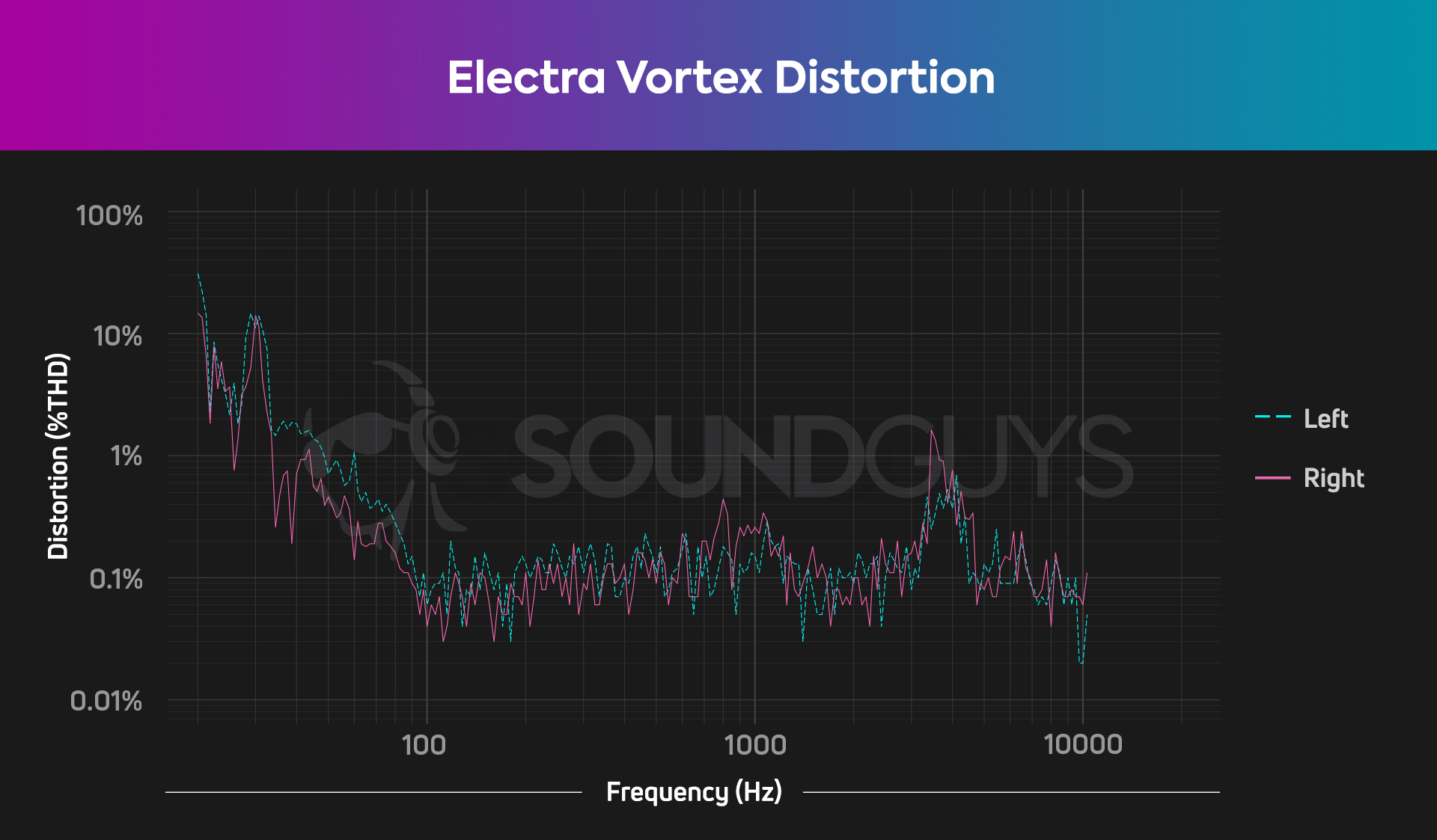
When it comes to total harmonic distortion (THD%), the higher the value, the worse it is. High values at low frequencies (on the left side of the chart) are pretty much expected and generally less noticeable. The rise to above 1% at around 4kHz is tied to the dip in the frequency response. Basically, this headphone is bad, but distortion isn’t its biggest issue.
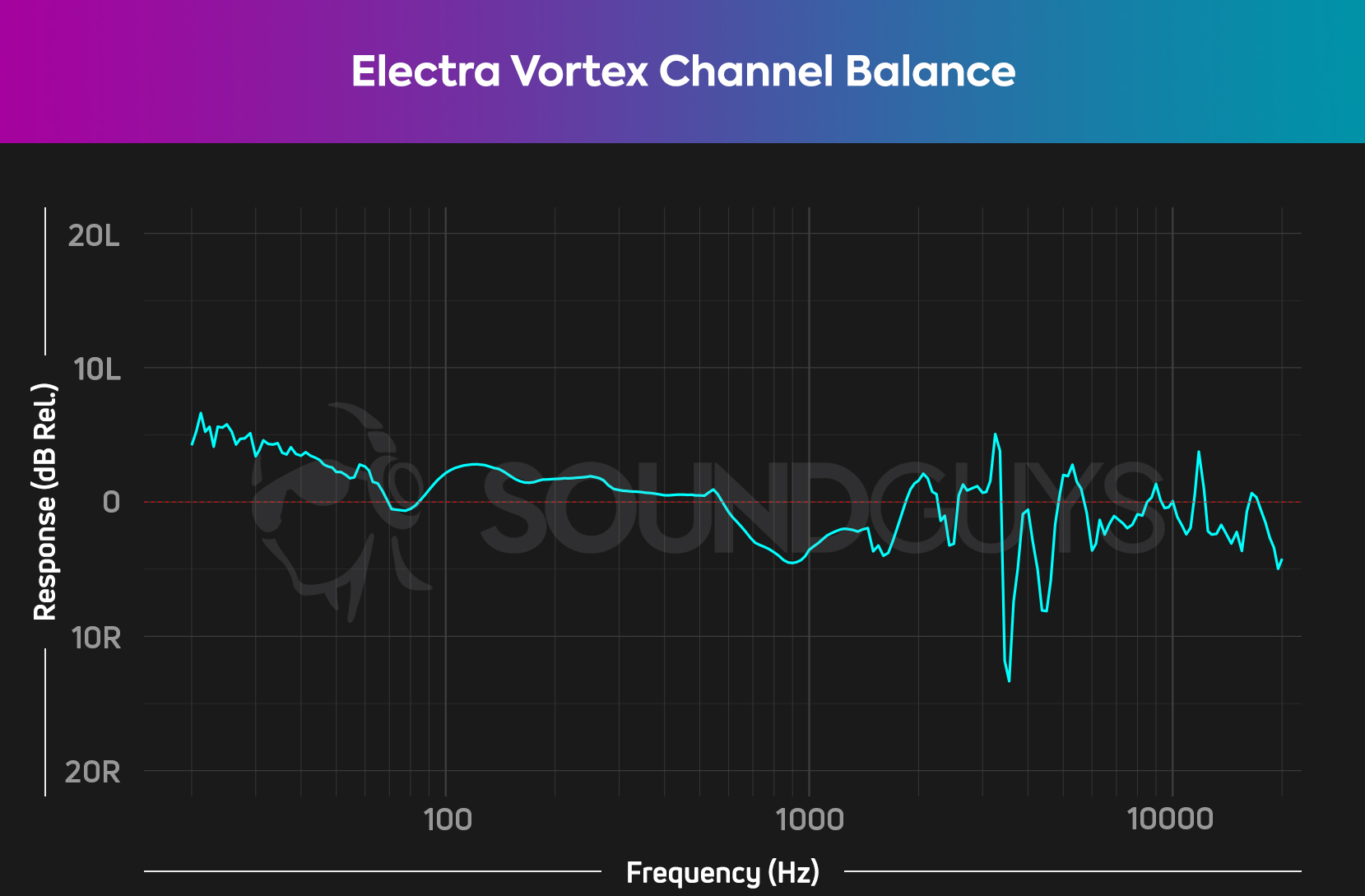
Good left-right channel balance requires well matched transducers and a good, stable fit. A flat line at 0dB would result if everything was perfectly matched, which is ideal for stereo. This chart reveals some major variations around 3.5kHz, and varying mismatches of around +/- 6dB elsewhere, which is a problem.
Electra Extra Bass
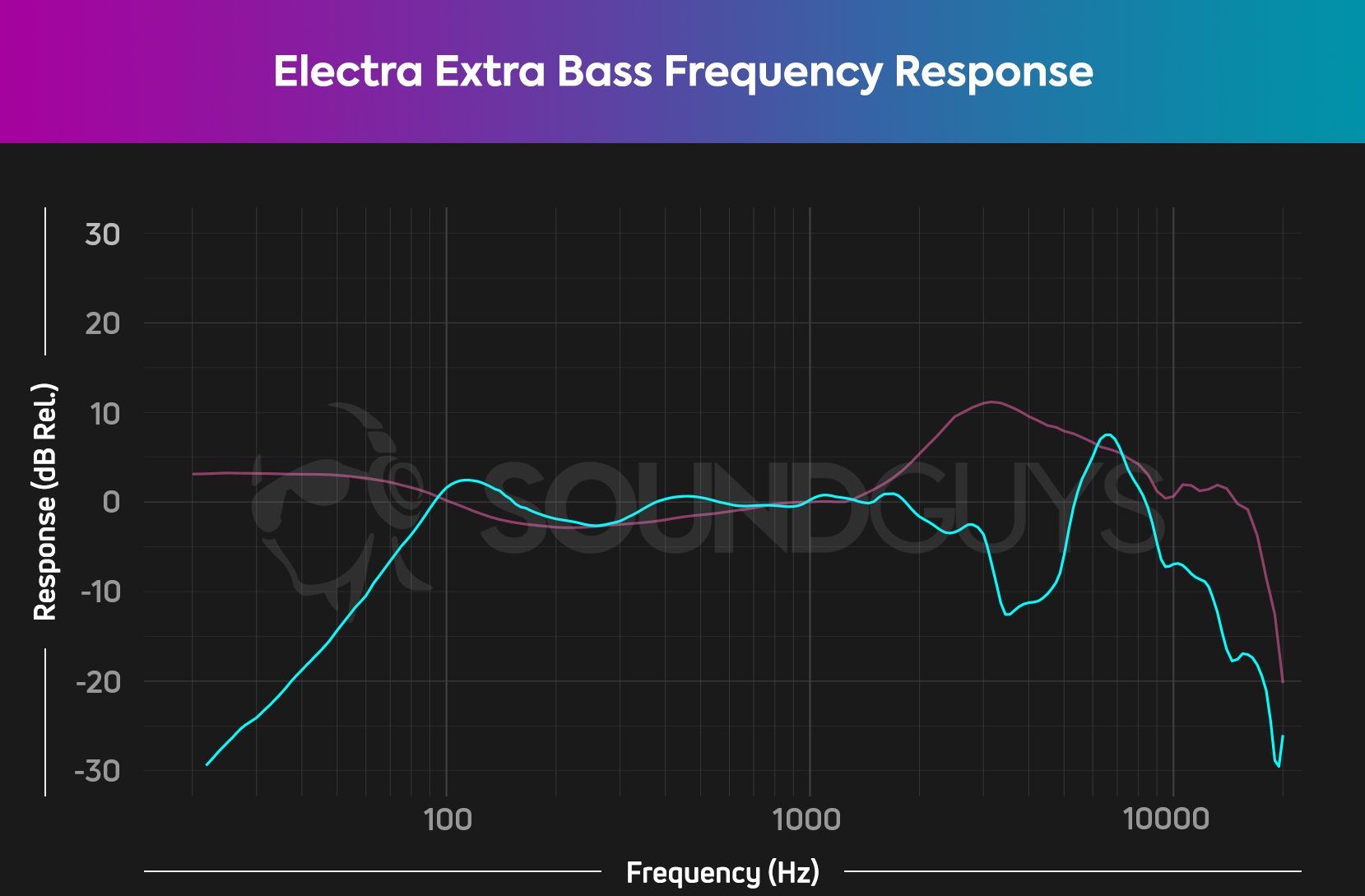
This frequency response shows very similar attributes to the Vortex above, and clearly no extra bass at all. The lower midrange is well represented, everything else is not. Bass below 100Hz is absent, and so is the treble, except for the narrow area of 6-8kHz. The faint red curve shows our ideal consumer headphone response, for reference. What we see here is far from ideal, and translates to heavily attenuated bass notes and poorly represented treble. You won’t get any oomph out of songs, or any useful detail whatsoever with a response like this.
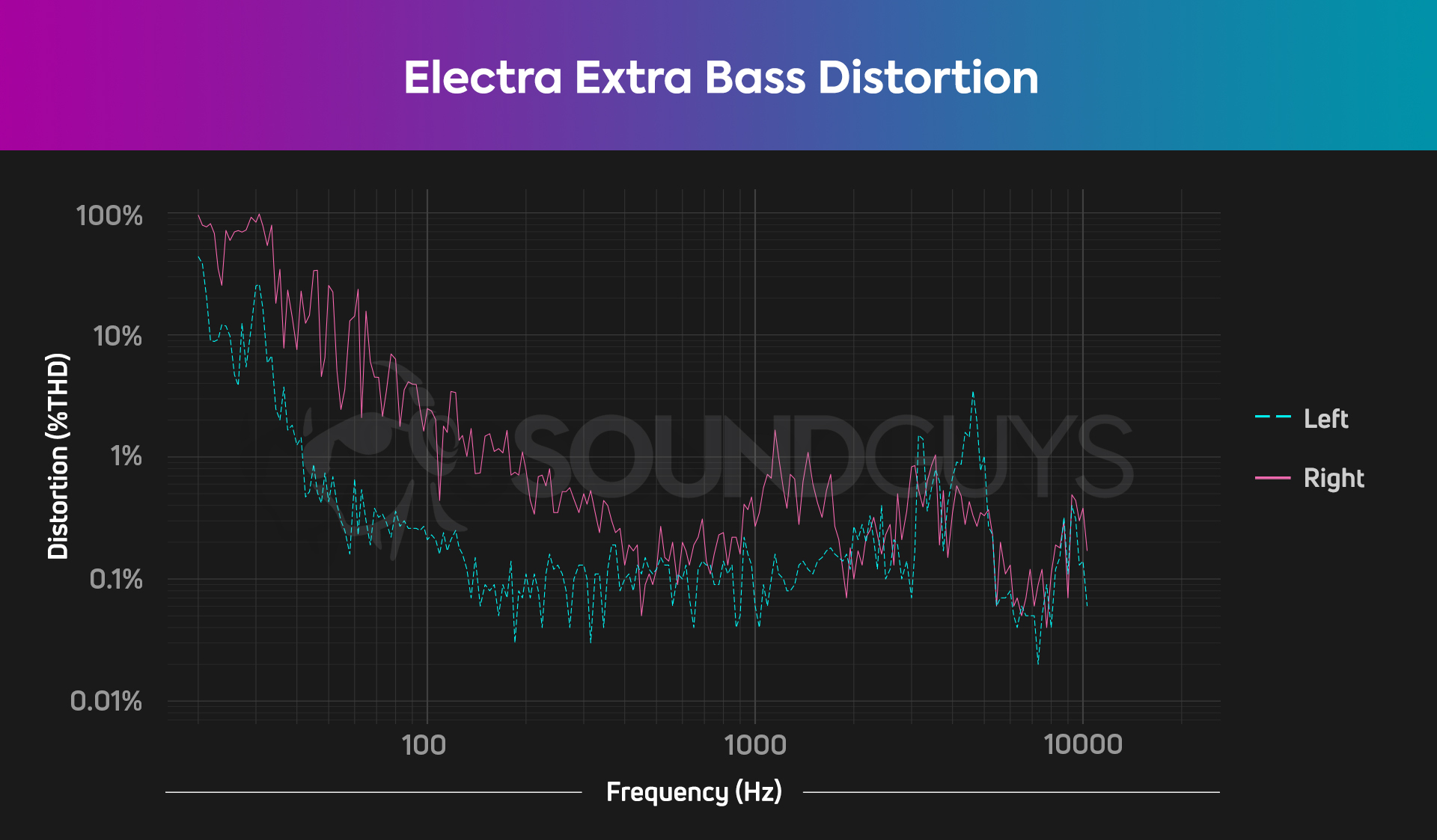
The right channel has a much higher measured %THD than the left, almost across the entire frequency range, which is clearly not good. Any mismatch in the left and right channels will affect the stereo image. The increased distortion tells us there is definitely something up with the right side driver.
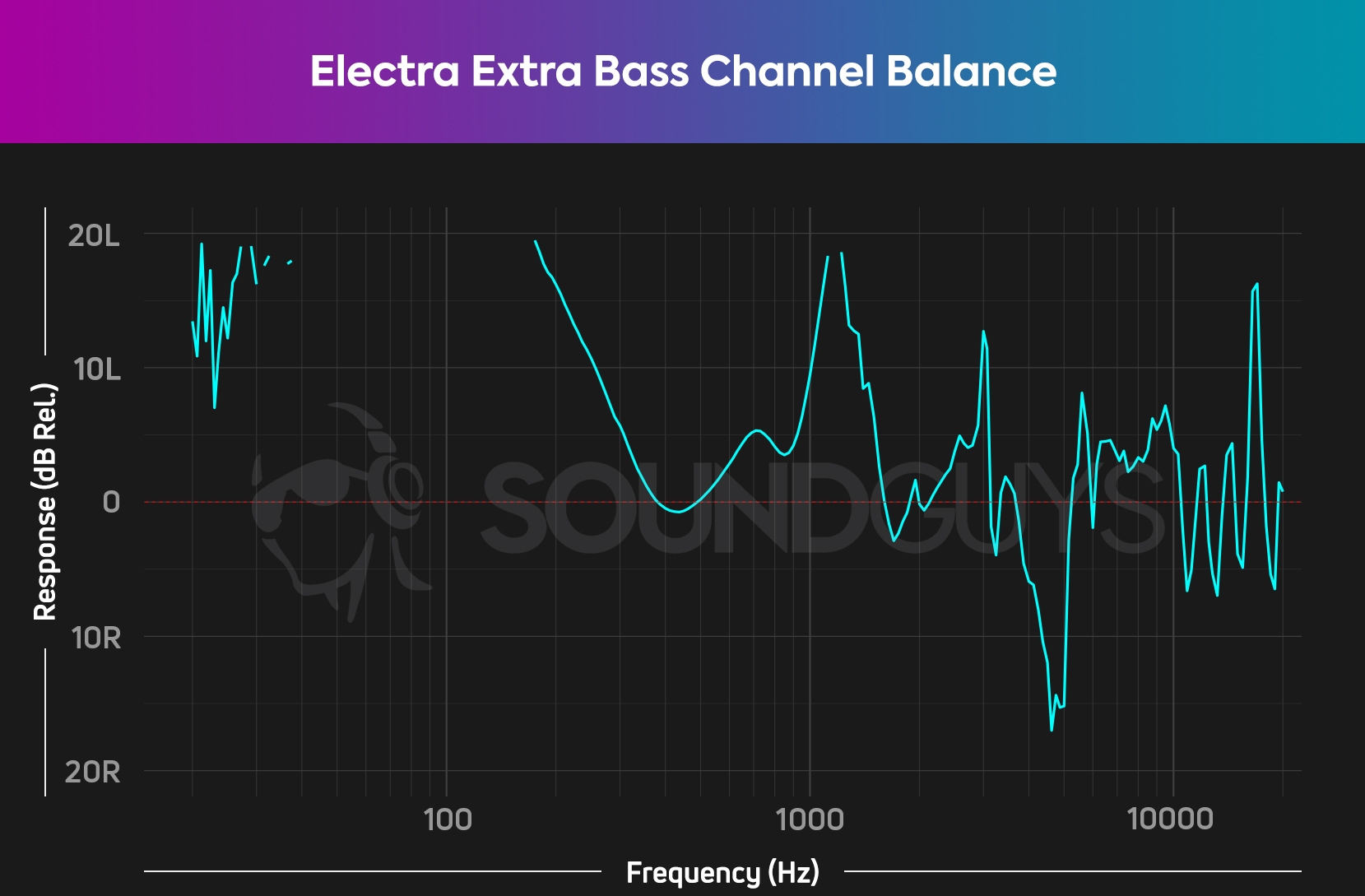
Here again we can see that the right driver has a serious problem. This is by far the worst channel matching we’ve ever seen in any headphone, with the left driver producing over 20dB more than the right around 100Hz, and wild variations across the frequency range. Awe-inspiringly terrible.
Electra Volume Limiting
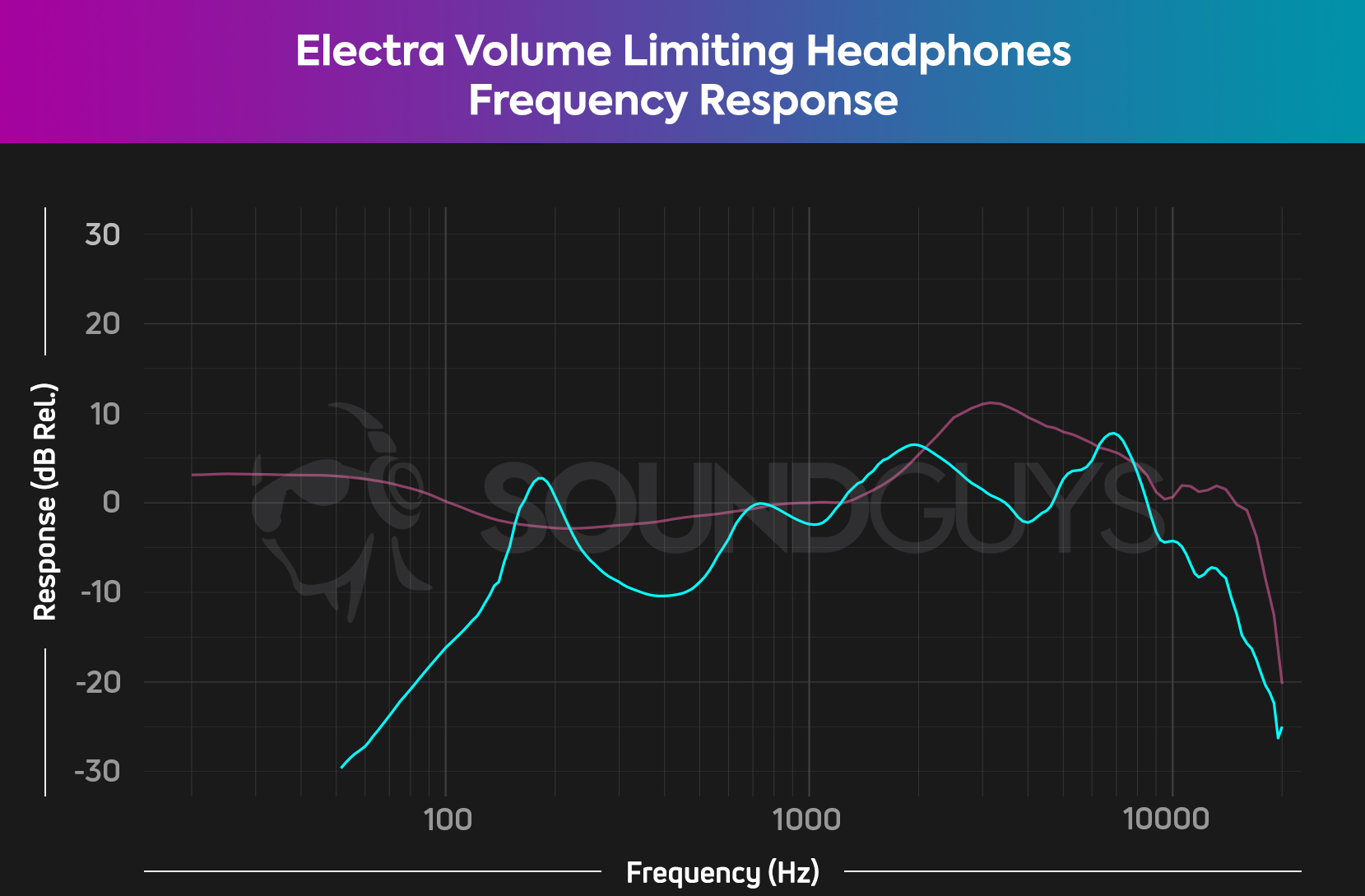
This measured response is really, really bad, with no significant output below 150Hz, hardly anything above 8kHz, and swings of +/- 10dB in between, with some big dips and ugly resonances. Truly a contender for Worst Of All Time in the frequency response category. This is so far from our ideal that’s it’s safe to say no one could possibly like the sound of this abomination. Truly, if you want a cheap pair of headphones, you’re much better off saving a bit for any of our favorite earbuds under $20.
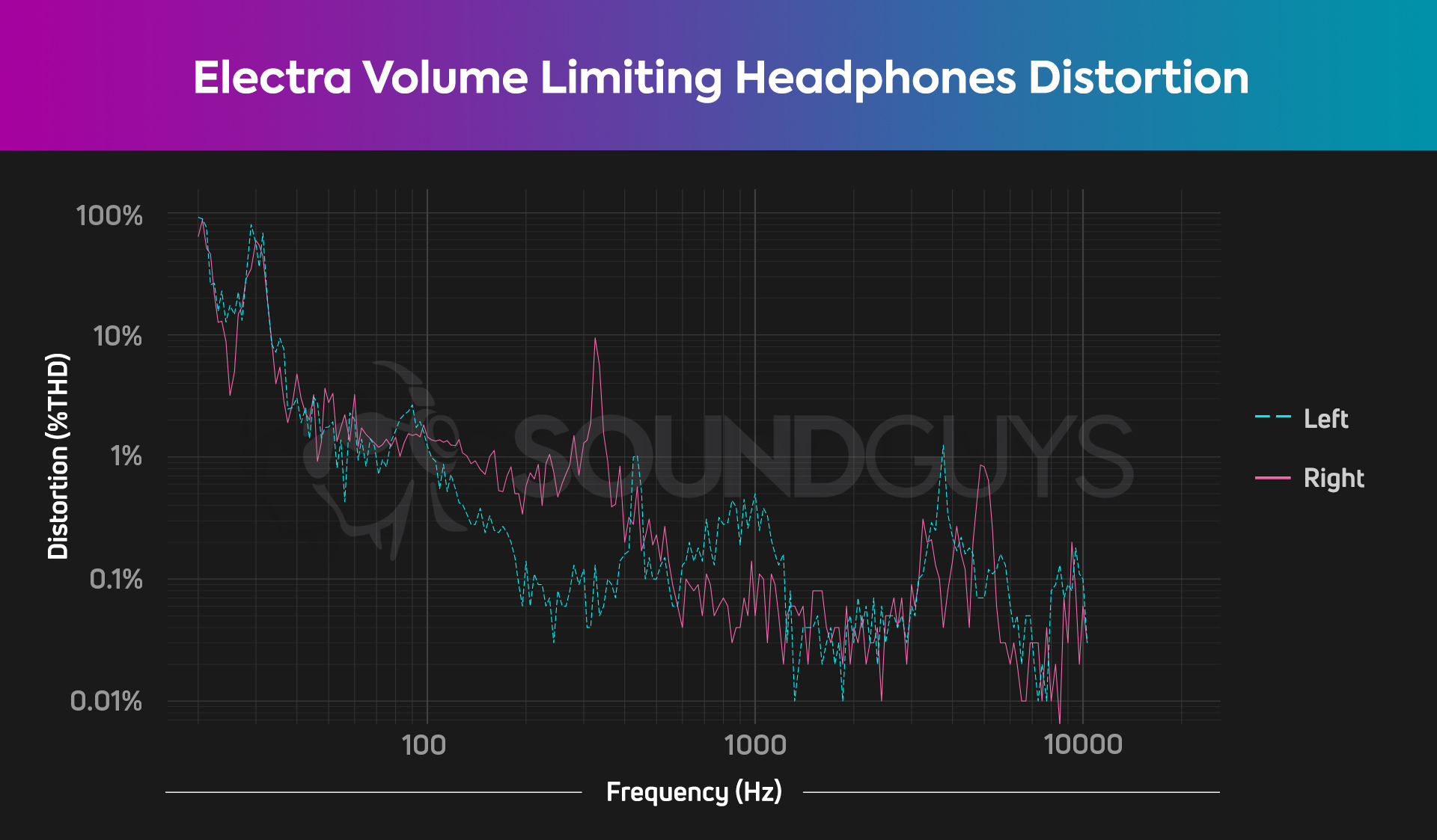
At low frequencies THD reaches close to 100%. The spikes around 300 and 400Hz, and around 4kHz are really nasty. On top of that, any left and right channel mismatches will affect the stereo image. In this chart the left and right channels seem to be fighting it out to see which can produce the worst performance. The real loser: the listener.
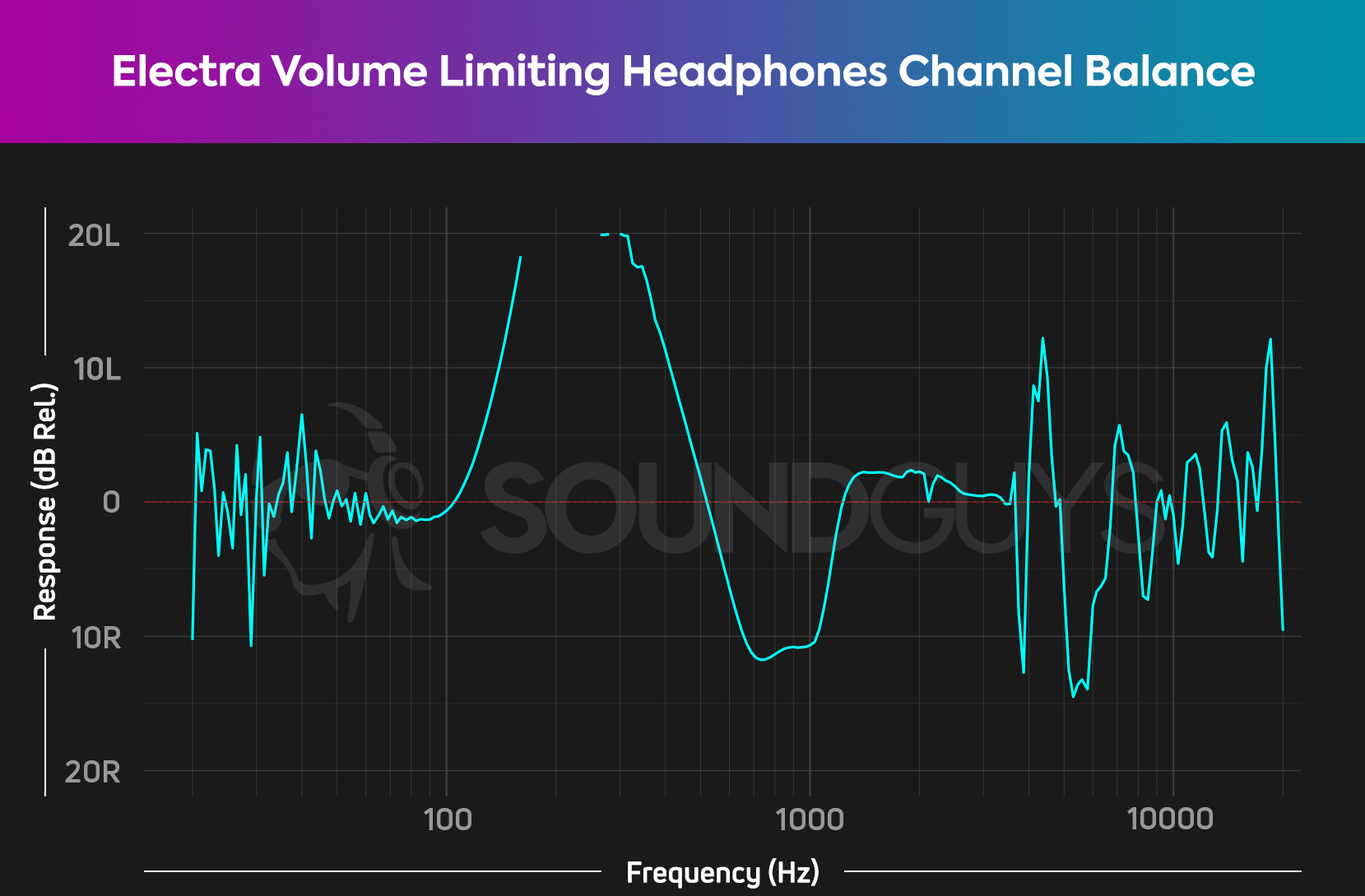
A flat line at 0dB would be the ideal if everything was perfectly matched for stereo. In this example, we once again see massive variations of 20dB across the frequency range. This will ruin any chance of a coherent stereo image. You would have to try really hard to come up with something worse.
Moodlab Rex
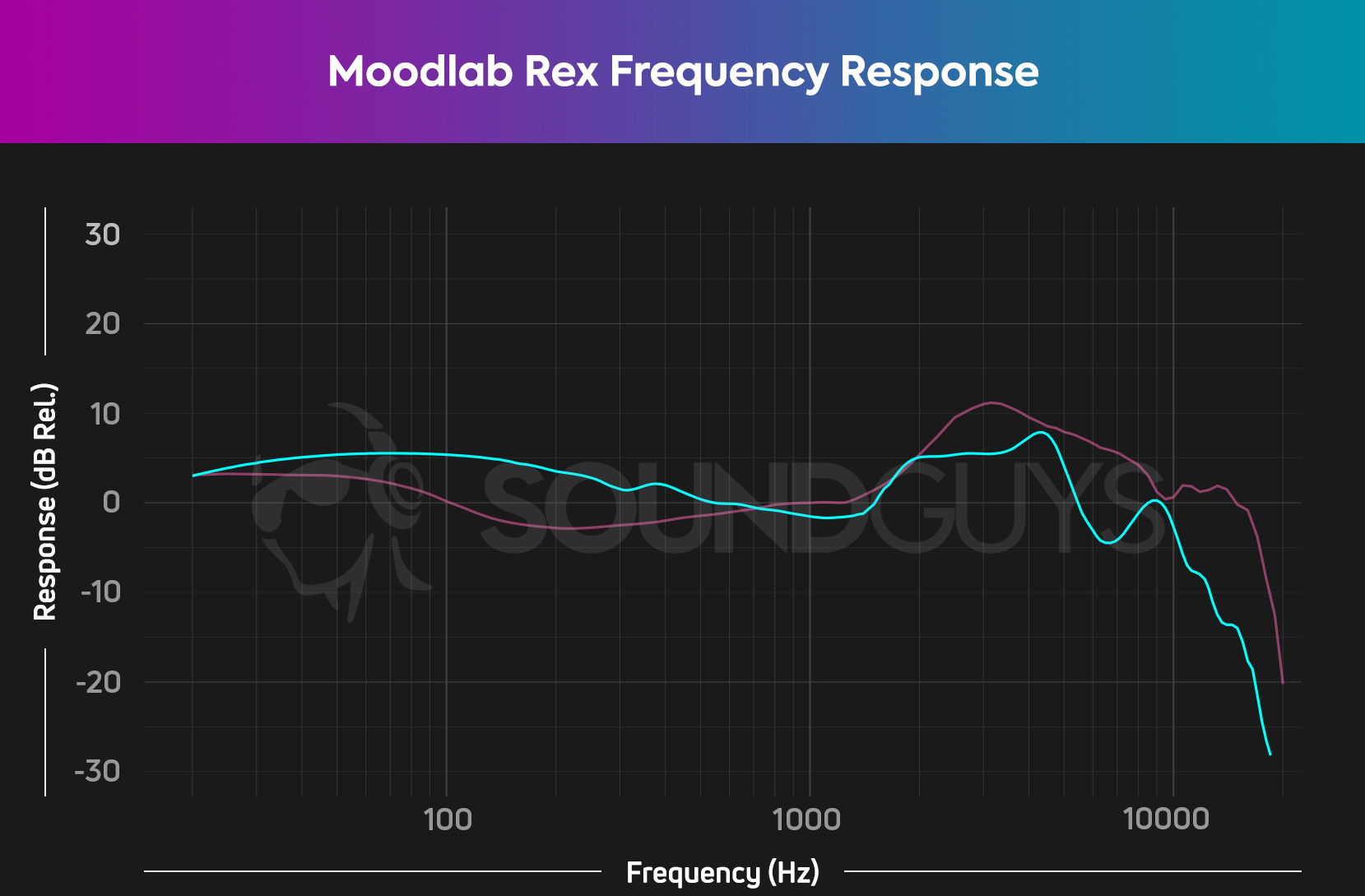
Surprisingly, apart from the lack of high-frequency extension, this isn’t such a terrible-looking response. It actually looks better than some name-brand true wireless earbuds we’ve tested. There’s some emphasis on the upper bass and low midrange, but compared to the other headphones in this article, the Moodlab Rex is a big step up. It’s far from the worst we’ve seen, and by far the best of our dollar store candidates.
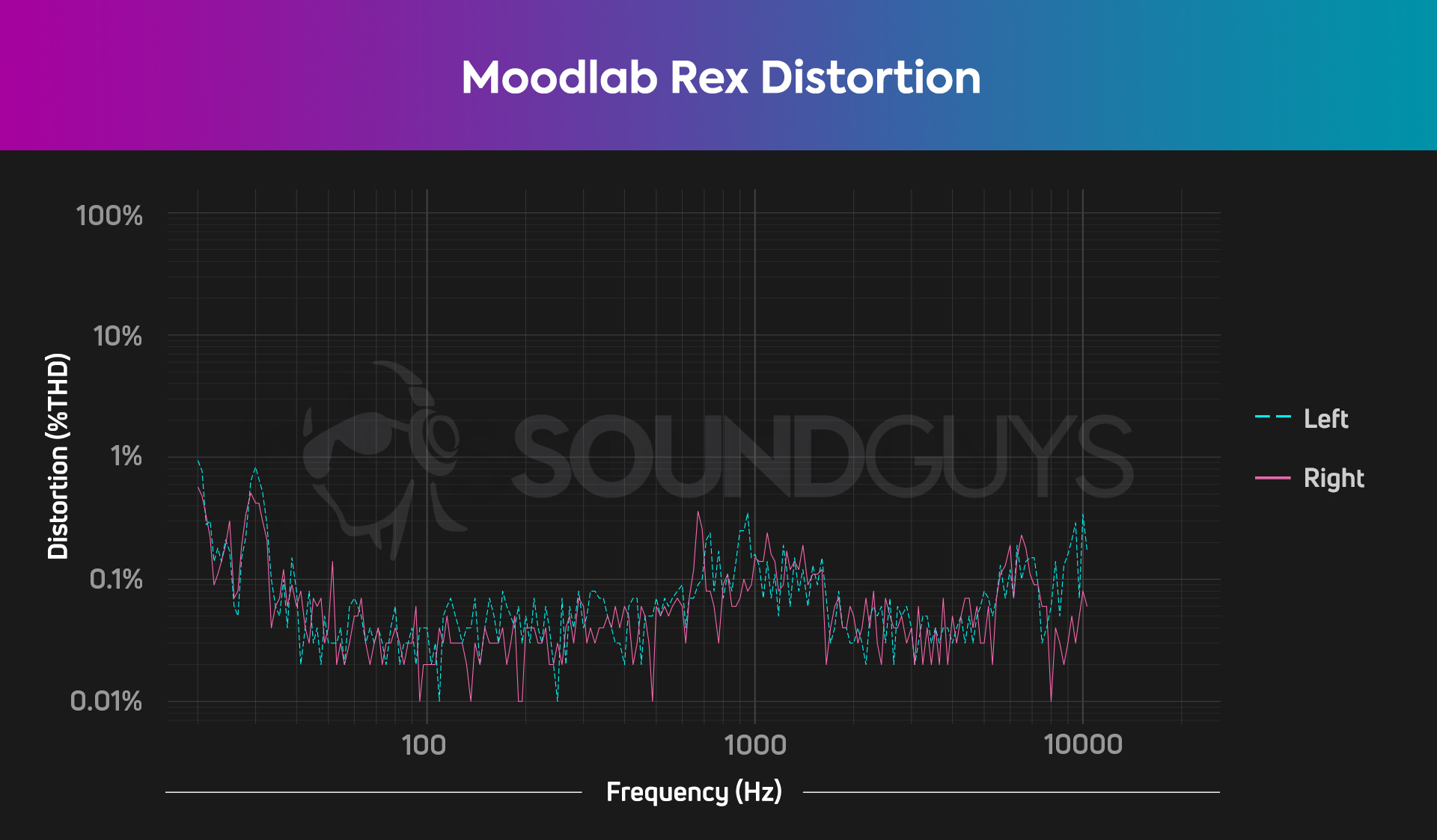
This chart is like a breath of fresh air after the previous THD graphs, but it’s a long way from ideal. The rise around 1kHz is right in the region where our hearing is most sensitive, so not a great feature.
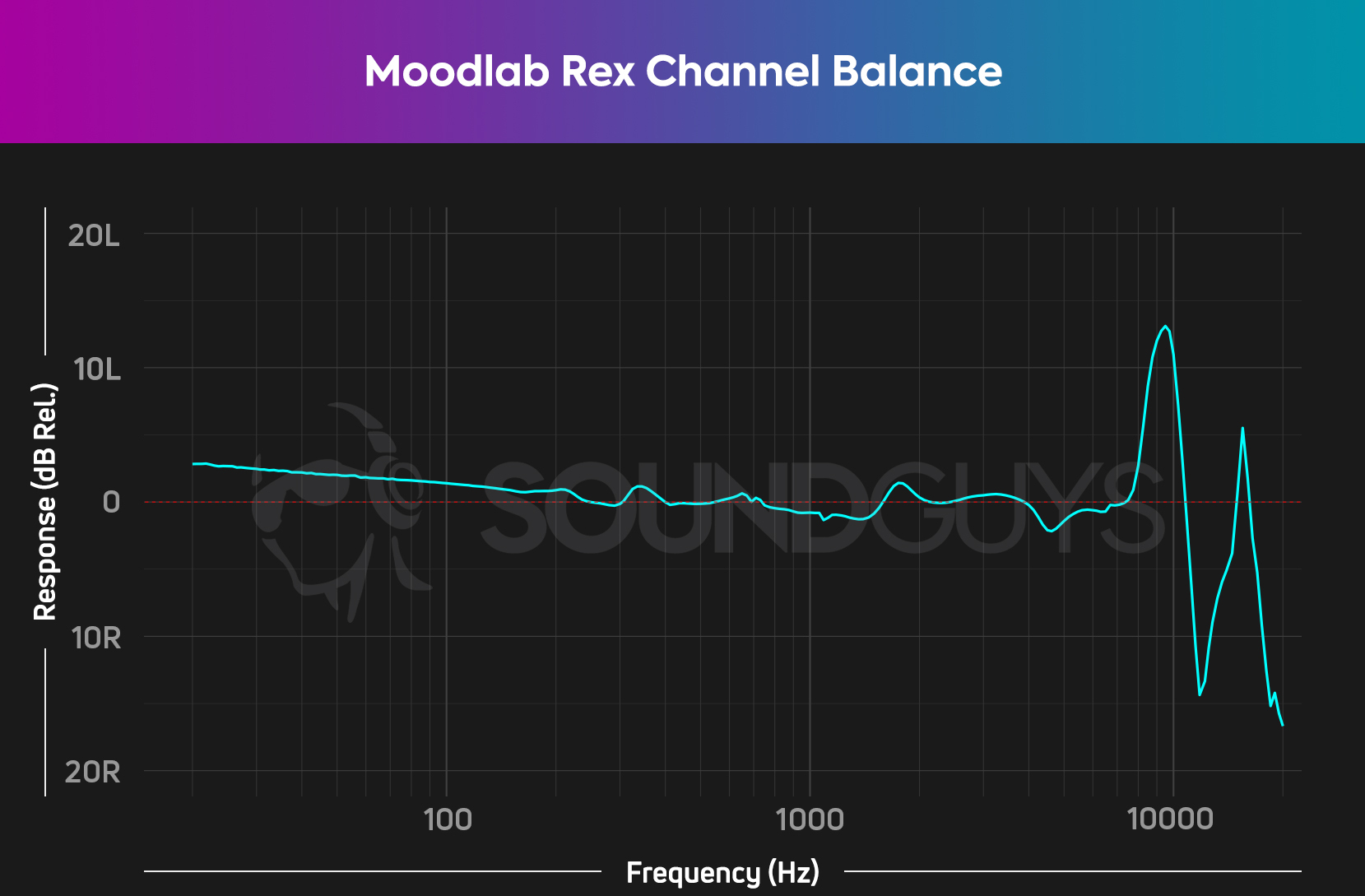
A flat line, close to the X-axis is always good to see for channel balance charts. Except for the massive deviation that occurs around 10kHz,which may well be due to fit, this headphone’s channels aren’t badly matched for the most part. Moodlab Rex comes out on top for all measurements. It really is the king of this hill. Or should that be pile?
A good point to note here is that on the packaging, all these headphones quote a frequency response of 20-20kHz, with no tolerance specified. Our measurements emphasize that, as we’ve said before, without a specified tolerance this is absolutely meaningless, and tells you nothing about a product’s performance.
Should you ever buy dollar store headphones?
Generally, no. You’re really best off saving a bit more cash for a reputable pair of cheap headphones or earbuds.
With the exception of the in-ear model, the headphone samples we purchased all measure spectacularly poorly. It is clear from looking at the frequency response charts that these manufacturers made no effort to make these headphones sound good. They sound horrible, and provide superb examples of what a frequency response (for anything) should not look like.
Interestingly, the Moodlab Rex actually measures okay in terms of frequency response (to a point) and distortion. The bad connection shows it clearly has issues with reliability right out of the box, indicating that aspects of the design and quality assurance process are lousy. The data suggests that in-ear headphones are the easiest style to get (almost) right, even at the most entry-level of price points.
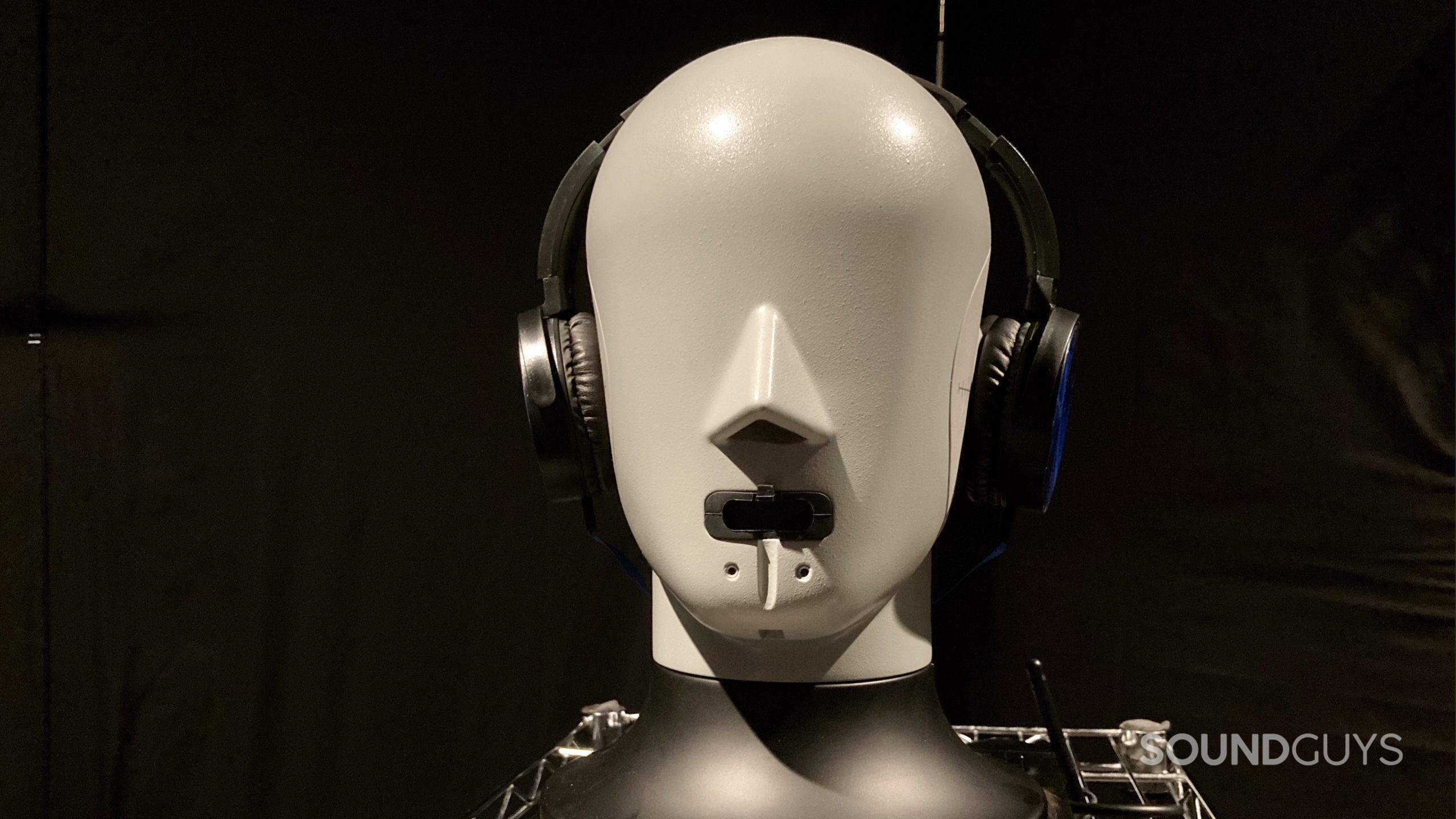
While they all produce sound and interface with the ears—therefore meeting the basic definition of headphones—it does not come as a shock that the products we purchased are either bad, not good, or not well made. There are clear manufacturing issues, and no doubt adequate quality control checks never happened. And the popular retailer of discount imported goods that we purchased them from is likely aware of these issues. It’s probably why the company does not give refunds or offer exchanges on products.
Perhaps the most concerning discovery of our investigation is that the headphone marketed as volume limiting, with a quoted output limit of 85dB, actually has no such output limit. It just has very low sensitivity, but with enough voltage applied (even from a cellphone), it can and will produce higher output levels. It might be wise for the popular retailer of discount imported goods to remove that product from its shelves or have it repackaged, since it constitutes demonstrably false advertising of a non-existent safety feature. Just saying.
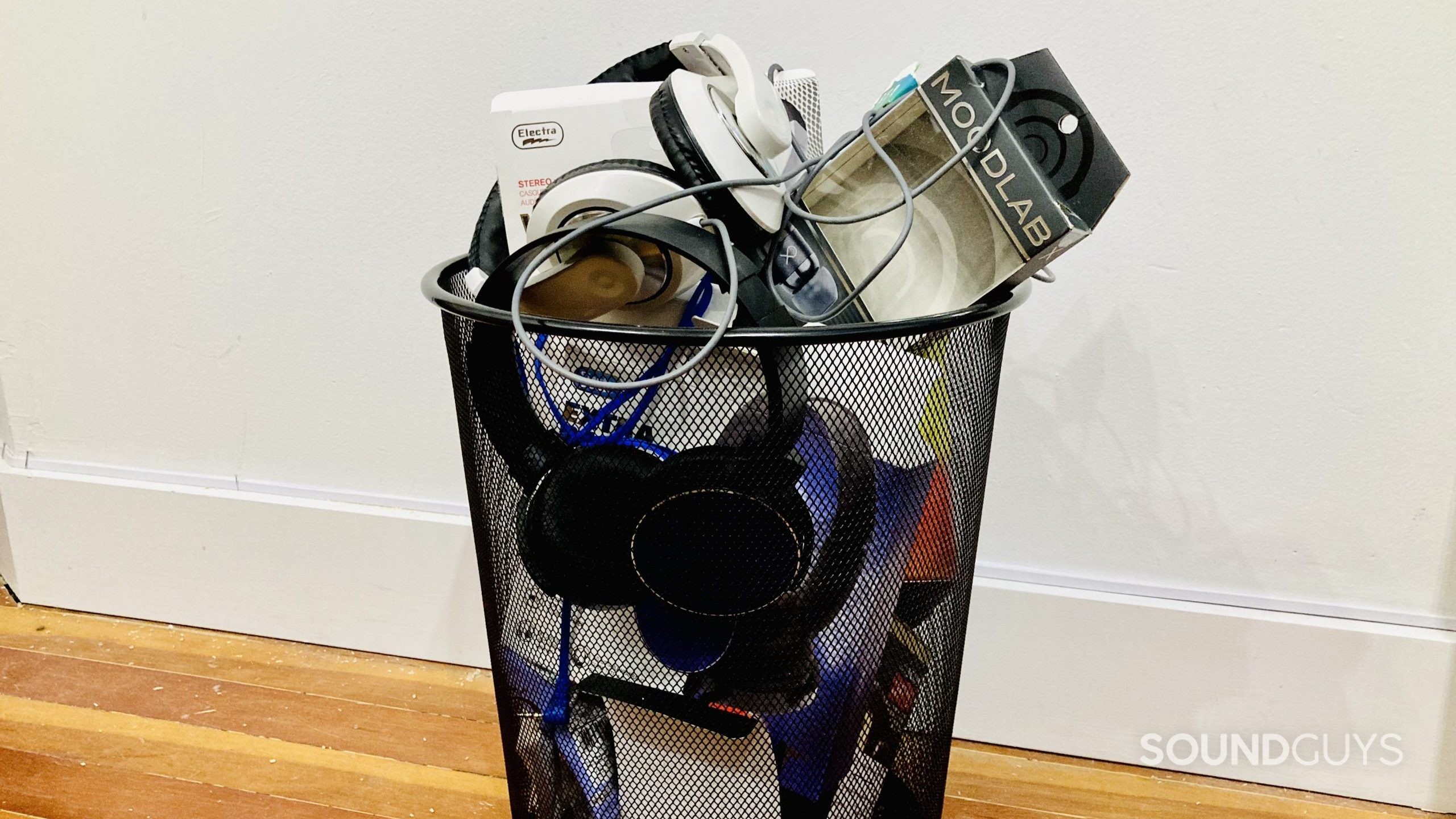
Now, I’m no stranger to browsing the aisles of dollar stores and imported discount goods emporia. I didn’t get where I am today by overspending on sundry items. I have even purchased tools from such vendors that were good for more than one job. But I have always stuck by a simple rule to avoid buying anything with moving parts from these retailers. Based on this investigation, it’s safe to say that headphones will remain on that list. Buyer beware.
Thank you for being part of our community. Read our Comment Policy before posting.